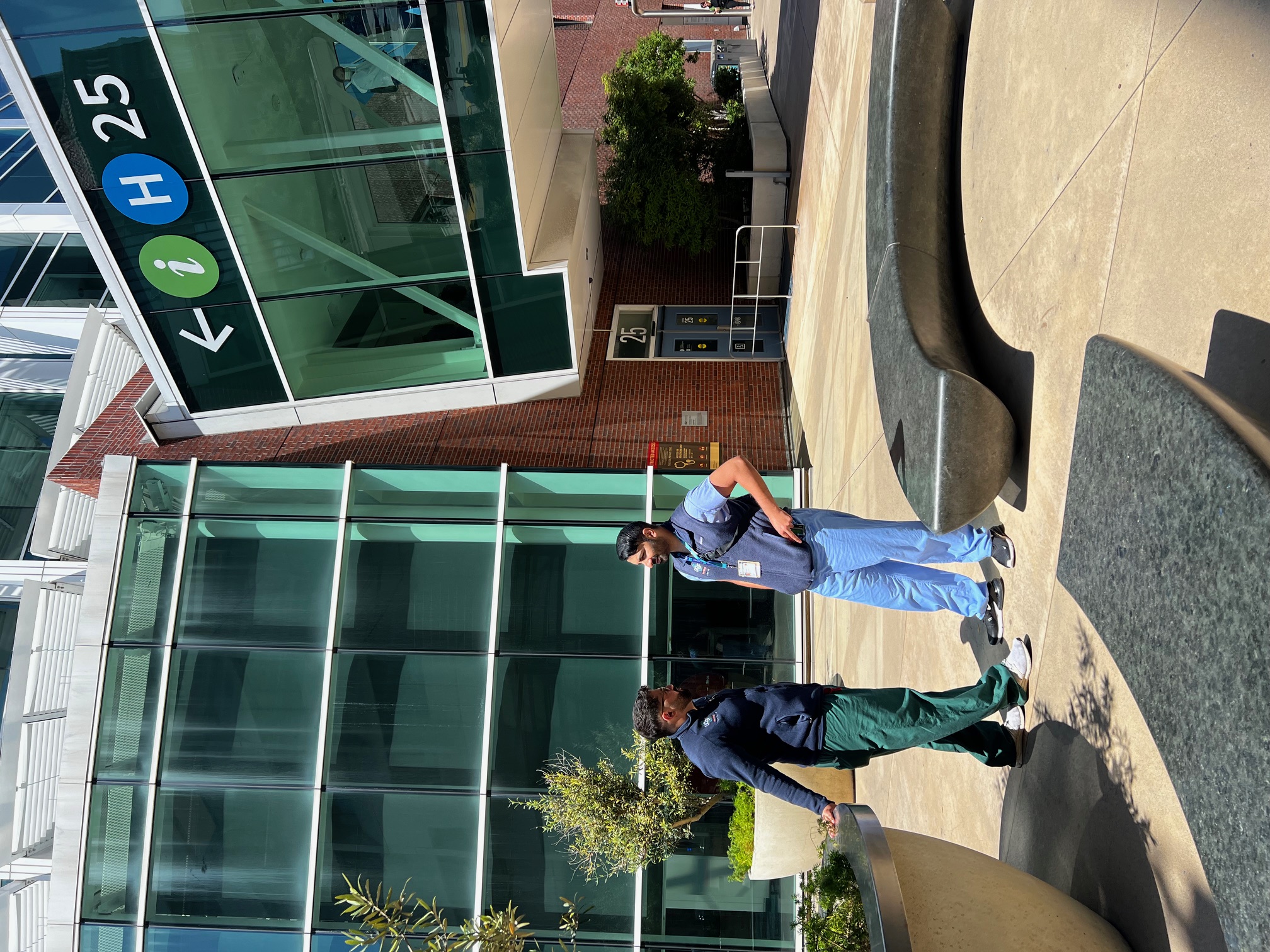Three-hospitals: giving residents experience caring for patients in different health systems
Neurology residents at UCSF will rotate through three very different hospitals. Moffitt-Long Hospital at UCSF Health is a tertiary/quaternary care facility that draws patients from the San Francisco Bay area, Northern California, and across the nation. Zuckerberg San Francisco General Hospital (ZSFG) serves uninsured and underinsured patients in San Francisco and is the city's only Level I trauma center. The Veterans Administration Medical Center (VAMC) serves predominantly war veterans including a growing number of Iraq/Afghanistan veterans and is a national referral center for movement disorders and an Epilepsy Center of Excellence site. For child neurology experiences, residents rotate through Benioff Children’s Hospital, also a part of UCSF Health, and the flagship hospital for our child neurology residency program. Residents also rotate through outpatient clinics at UCSF's Weill Institute for Neurosciences at Mission Bay, which houses the Multiple Sclerosis, Memory and Aging, Movement Disorders, Neurorecovery, and Complex Diagnosis Clinics.

Clinic weeks: allowing residents to focus on inpatients on inpatient rotations, and outpatients during clinic weeks
Every resident has a clinic week block every 6 weeks during which continuity clinics, outpatient block didactics and subspecialty clinics occur. This allows junior residents to begin experiencing subspecialty neurology clinics at the outset of their year. Continuity clinics take place at all three hospitals, allowing residents to learn how to care for outpatients in diverse health care systems. Clinic weeks also include a half-day longitudinal selective, which recurs every 6 weeks, giving each resident the opportunity to work with a neurology faculty member 8 times over the course of the year.
Other outpatient rotations outside of clinic weeks include clinic rotations at the VAMC focused on epilepsy, movement disorders and telehealth, and neuromuscular disorders; psychiatry and behavioral neurology; and an outpatient rotation at ZSFG with a special curriculum focused on caring for underserved patients.
Subspecialty electives: giving our residents exposure to the full breadth of neurology subspecialties
Electives begin as early as July of the R2 year. In addition to the longitudinal selective described above, residents are given 4 weeks of elective annually in the R2 and R3 years, and at least 18 weeks of elective during the R4 year if they do not pursue the flexible residency program. Elective subspecialty clinics span the breadth of neurology and include amyotrophic lateral sclerosis, epilepsy, headache, behavioral neurology, movement disorders, multiple sclerosis, neurocritical care, neuroinfectious disease, neurointerventional radiology, neuromuscular, neurooncology, neurorecovery, neurovascular, neuroophthalmology, pain, neuropathology, neuroradiology, sleep, and palliative care. Additional electives options include lumbar puncture, a rural neurology clinic in California’s Central Valley, neurology focused on women’s health, and research.
Child neurology
Adult neurology residents spend one month each year on the child neurology service. During the R2 and R4 years, residents learn the fundamentals of child neurology by rotating two weeks on the pediatric neurohospitalist service and two weeks in clinic. In the R3 year, residents rotate through the pediatric epilepsy service. Teaching conferences including Journal Club, Pediatric Neuroradiology, and Pediatric Neurology Clinic Conference, are held weekly.
Flexible residency: providing the opportunity to launch an academic career
Many residents choose to enter our flexible residency program in which they spend 6 months in the R4 year learning to perform clinical or laboratory research, or develop skills with a focus on public health or health equity, global health, or becoming a master clinician or clinician-educator. Residents also have the option of up to 5 additional elective months in lieu of flexible residency.
Patient safety and quality improvement
Understanding the science of patient safety and quality improvement is critical to today’s neurologists and especially neurology leaders. Every resident in our program participates in a rigorous patient safety and quality improvement curriculum, including leading a departmental root cause analysis. This occurs during the medicine internship for categorical residents and during physicianship for advanced and pediatric neurology residents. Residents interested in a deeper experience have the opportunity to lead an annual departmental quality improvement initiative through UCSF’s REFLECT program.
